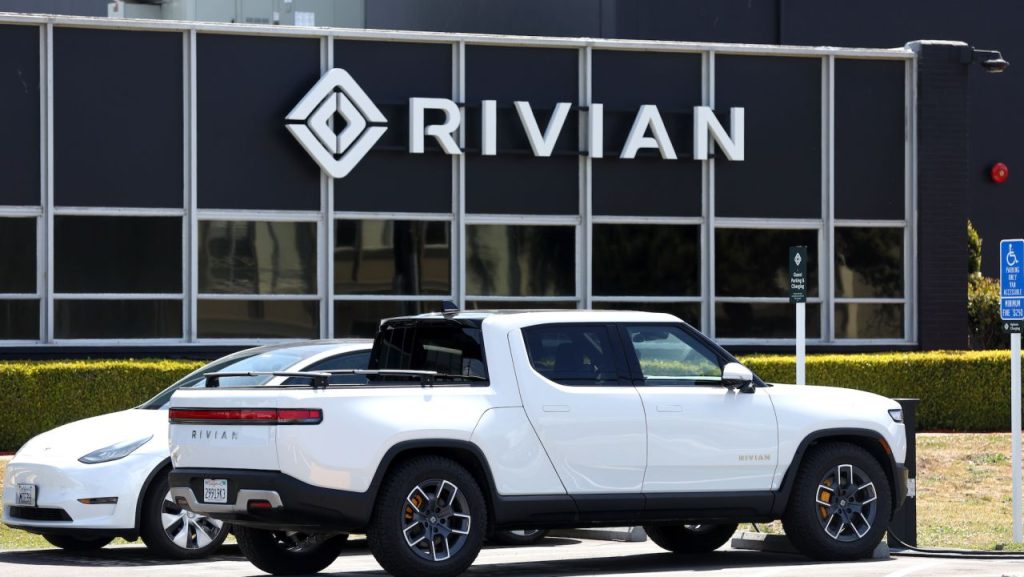Is Rivian Stock the Next Big Thing? What Investors Need to Know in 2025

As electric vehicles surge in popularity, Rivian has emerged as a frontrunner in the race to dominate the eco-friendly automotive market. With innovative designs and a bold commitment to sustainable transportation, investors are eager to figure out if Rivian stock is the next big thing. As we approach 2025, the landscape of electric vehicle investments is rapidly evolving, making it crucial for savvy investors to stay informed. Will Rivian’s ambitious plans and unique offerings catapult its stock to new heights, or will competition derail its trajectory?
In this article, we’ll delve into Rivian’s performance, market position, and future prospects, equipping you with the insights you need to make informed decisions. Whether you’re a seasoned investor or new to the world of stocks, understanding Rivian’s potential could be key to navigating the electrifying future of the automotive industry. Join us as we explore what investors need to know about Rivian stock in the coming years.
Overview of Rivian’s Business Model
Rivian Automotive (NASDAQ: RIVN) operates as a vertically integrated electric vehicle (EV) manufacturer, focusing on premium consumer vehicles and commercial fleets. Its core products include the R1T electric pickup truck and R1S SUV, designed for adventure enthusiasts with ranges up to 400 miles and rapid acceleration. Additionally, Rivian’s partnership with Amazon has led to the development of electric delivery vans, with 100,000 units ordered by 2030.
The company employs a direct-to-consumer (DTC) sales model, bypassing traditional dealerships to maintain pricing control and customer relationships. Rivian also monetizes software services, including over-the-air updates and subscription-based features like autonomous driving, which contributed $4.8 billion in revenue in 2024.
Recent Performance of Rivian Stock
As of May 2025, Rivian’s stock trades at $15.49, reflecting a 3.34% YTD decline due to macroeconomic headwinds. However, Q4 2024 marked a milestone: Rivian reported its first gross profit of $170 million, driven by cost reductions and improved production efficiency. Revenue surged 31% YoY to $1.73 billion, exceeding analyst expectations by $300 million.
Despite these gains, 2025 delivery guidance of 46,000–51,000 vehicles disappointed investors, signaling a 7% YoY drop at the midpoint. This cautious outlook, coupled with uncertainty around the $7,500 EV tax credit, triggered a 4% stock selloff post-earnings.
Key Factors Influencing Rivian’s Stock Price
1. Production Scalability: Rivian’s ability to ramp up output at its Illinois and Georgia plants remains critical. Delays in launching the R2 SUV (slated for 2026) could erode investor confidence.
2. Battery Costs: Rising lithium prices ($85/kg in 2025) threaten margins. Rivian’s new Georgia battery plant aims to reduce reliance on third-party suppliers.
3. Regulatory Shifts: Potential elimination of federal EV incentives under U.S. policy reviews poses a $3 billion revenue risk.
4. Strategic Partnerships: The $5 billion joint venture with Volkswagen for software development and platform-sharing could accelerate economies of scale.
Rivian’s Competitive Landscape
Rivian faces intense competition:
Tesla: Dominates 65% of the U.S. EV market with its Cybertruck and Supercharger network.
Legacy Automakers: Ford’s F-150 Lightning and GM’s Silverado EV leverage existing dealership networks for faster adoption.
Chinese Rivals: Xiaomi’s SU7, priced at $30,000, highlights cost advantages from localized supply chains.
Rivian differentiates through adventure-focused branding and proprietary skateboard platform technology, which reduces manufacturing costs by 50% compared to traditional architectures.
Future Growth Potential and Market Trends
The global EV market is projected to grow at a 19.8% CAGR through 2030, driven by emission regulations and consumer demand. Rivian plans to:
1. Expand into Europe and Asia by 2027, targeting markets with high EV adoption rates like Norway and China.
2. Launch the R2 SUV at $45,000, targeting mass-market buyers with a lower-cost BOM (bill of materials)。
3. Scale software revenue to $10 billion by 2025 through autonomous driving subscriptions.
Risks and Challenges Facing Rivian
Cash Burn: Rivian’s operating cash flow remains negative (-$277 million in Q4 2024), with $17 billion needed to fund R&D and Georgia plant expansion.
Supply Chain Vulnerabilities: Semiconductor shortages and geopolitical tensions could delay production.
Debt Load: A debt-to-equity ratio of 11.81 exceeds industry averages, raising refinancing risks amid rising interest rates.
Expert Opinions and Analyst Predictions
Analysts remain divided:
Bull Case: Barclays forecasts $23/share (+48% upside), citing Rivian’s software monetization and Amazon partnership.
Bear Case: Bank of America warns of overvaluation, setting a $12 target due to delivery uncertainties.
Consensus: 10 “Hold,” 5 “Buy,” and 2 “Sell” ratings with an average target of $14.69.
How to Invest in Rivian Stock
1. Brokerage Accounts: Purchase RIVN shares via platforms like Fidelity or Robinhood.
2. Long-Term Strategy: Dollar-cost averaging during dips below $15 mitigates volatility.
3. Sector Diversification: Balance with ETFs like ICLN (clean energy) or TSLA to hedge EV risks.
Conclusion: Should You Consider Rivian Stock in 2025?
Rivian offers high-reward potential for risk-tolerant investors betting on EV adoption and software growth. However, near-term challenges—production delays, regulatory shifts, and cash burn—demand caution. Analysts recommend a “Hold” stance until R2 launch clarity emerges in late 2025. For long-term portfolios, Rivian’s innovation and Amazon alliance justify strategic exposure, but strict risk management is essential.